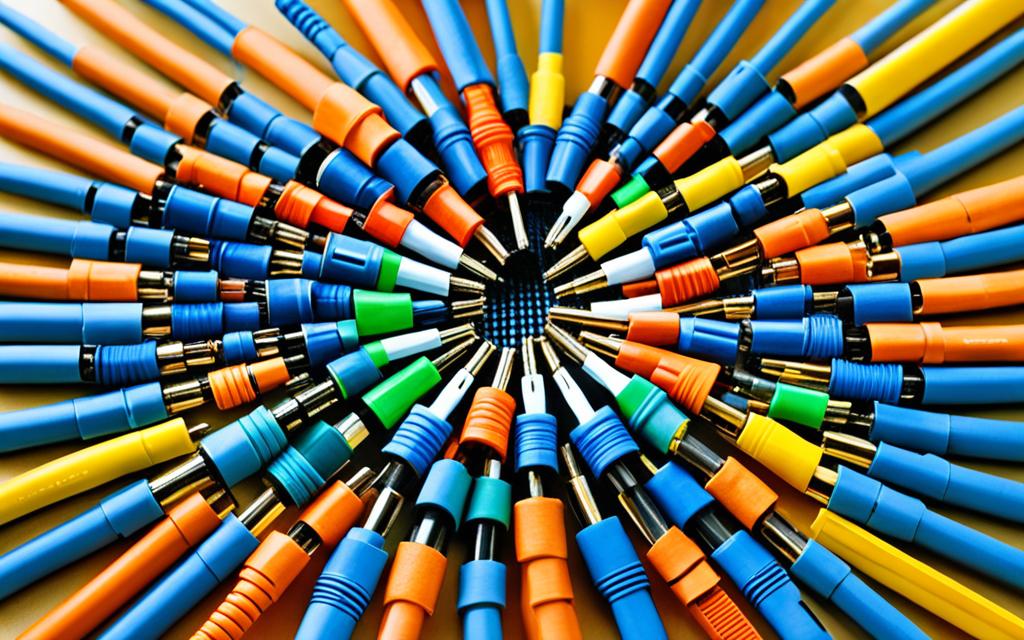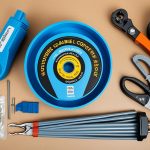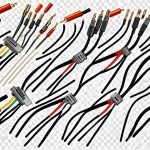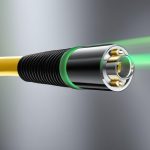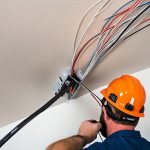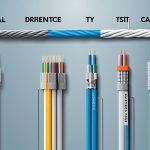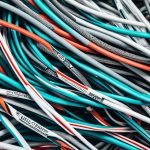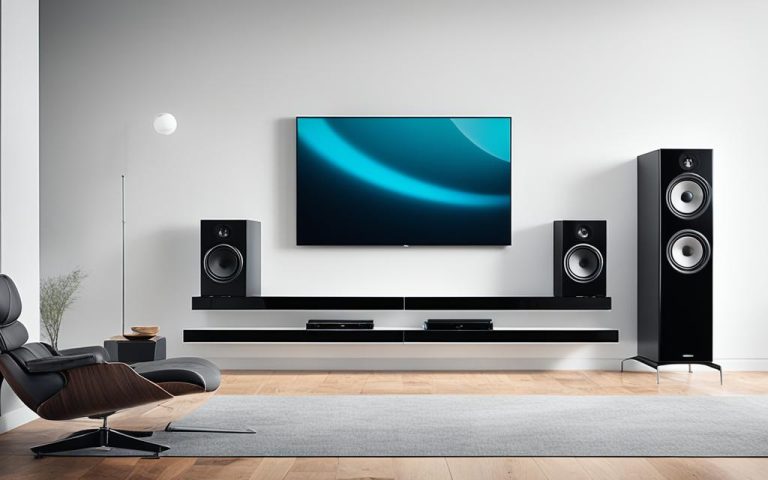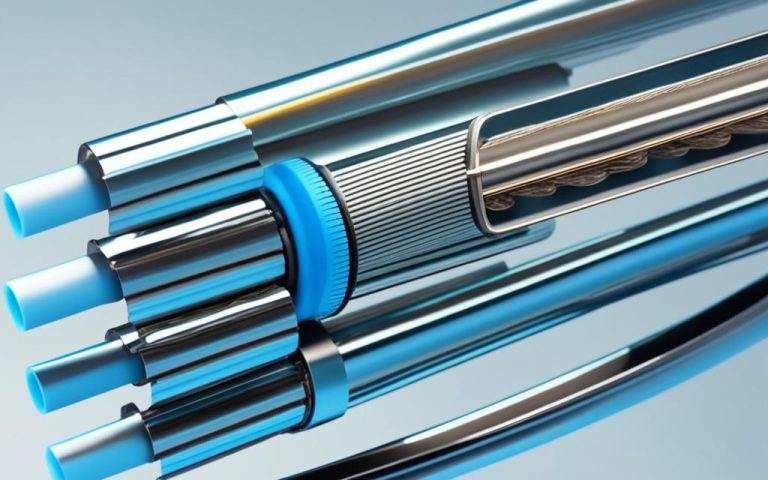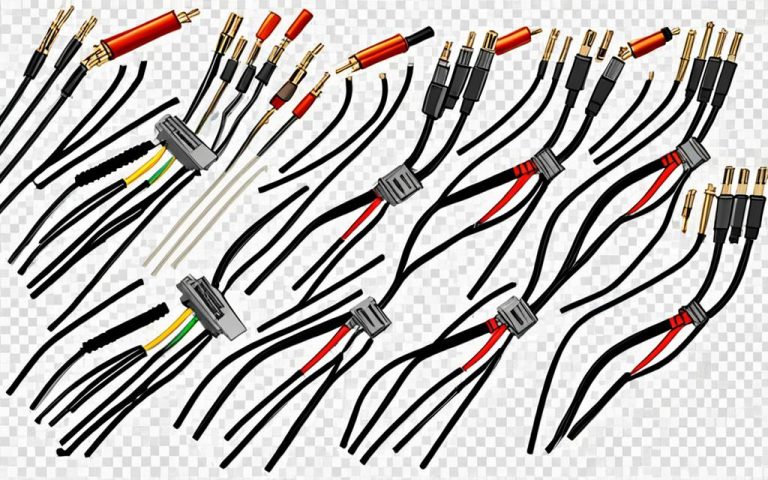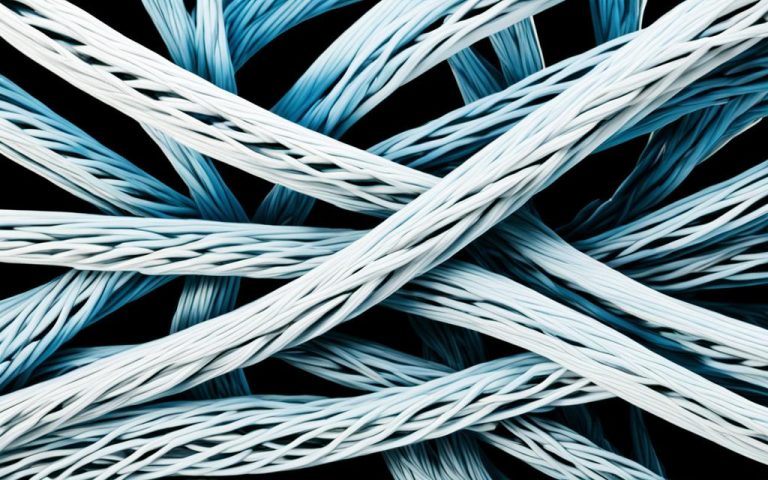Welcome to our comprehensive guide on coaxial cable connectors. In this article, we will explore the different types of connectors and their practical applications. Coaxial cable connectors are vital components in the field of electrical engineering and find extensive use in various industries. Understanding the types and uses of these connectors is essential for anyone working with network infrastructure.
When it comes to selecting the right coaxial connector, several factors need to be considered. These include voltage requirements, environmental conditions, required frequency, and the gender type of the connector. Coaxial connectors are typically categorized into male and female types. Male connectors have protruding pins, while female connectors have recesses to receive these pins. Male connectors have a simple design with a central pin and spring-loaded electrical contact points, while female connectors consist of a metallic tube, an insulating layer, and an outer cylinder.
Additionally, there are genderless coaxial connectors available in the market that combine male protrusion points and female slots. These connectors can be connected to either male or female connectors, providing versatility in various applications.
Choosing the right type of coaxial connector is crucial to ensure optimal performance and compatibility. In the next sections, we will delve deeper into the market trends and analysis of coaxial connectors, examine different cable types and connectors, highlight opportunities in the market, and conclude with how having a good understanding of coaxial cable connectors can help navigate network infrastructure with ease.
Stay tuned as we explore the fascinating world of coaxial cable connectors and their practical applications!
The Market for Coaxial Connectors (RF)
The global market for coaxial connectors, also known as RF connectors, is witnessing significant growth. With an expected compound annual growth rate (CAGR) of % during the forecast period, the market shows promising potential.
This growth can be attributed to the increasing demand for high-speed data transmission, advancements in wireless communication technologies, and the widespread adoption of coaxial connectors across various industries.
The telecommunications sector, recognized as a significant market player, holds the largest share of the RF connectors market, followed closely by the aerospace and defense industry. The automotive and healthcare sectors are also experiencing a surge in the usage of RF connectors.
Notable players in the market include Rosenberger, TE Connectivity, and Amphenol. With their expertise and industry presence, these companies have contributed to shaping the market landscape.
| Industry | Market Share |
|---|---|
| Telecommunications | XX% |
| Aerospace and Defense | XX% |
| Automotive | XX% |
| Healthcare | XX% |
The market size for coaxial connectors is projected to reach a significant value of USD billion by 2027, showcasing the growing prominence of this technology.
Further analysis reveals emerging trends such as miniaturization of connectors and the development of hybrid connectors that combine RF coaxial connectors with other types. These innovations cater to evolving industry demands and pave the way for future advancements.
Cable Types and Connectors: A Comprehensive Guide
Understanding the various types of cables and connectors is crucial in the realm of networking. Whether it’s for residential or commercial use, selecting the right cables and connectors ensures optimal performance and reliability of the network infrastructure.
Twisted Pair Cables
Twisted pair cables are widely used in networking applications for their high data transfer rates and cost-effectiveness. There are two main types of twisted pair cables:
- Unshielded Twisted Pair (UTP) cables: These cables are commonly used in Ethernet networks due to their affordability and ease of installation. UTP cables consist of several pairs of insulated copper wires twisted together to reduce electromagnetic interference. They are suitable for short to medium distances and offer data rates of up to 10 Gbps.
- Shielded Twisted Pair (STP) cables: Employing additional shielding, STP cables provide superior protection against electromagnetic interference. They are ideal for environments with high levels of noise and interference. STP cables are commonly used in industrial settings or areas with heavy electrical equipment. Despite offering improved performance, they are more expensive and challenging to install compared to UTP cables.
Coaxial Cables
Coaxial cables are known for their insulation and shielding, making them excellent for transmitting large amounts of data over long distances. Key features of coaxial cables include:
- High transmission speed and bandwidth.
- Economical solution for wired networks.
- Resistance to signal interference.
Coaxial cables consist of a central conductor, an insulating layer, a metallic shield, and an outer protective sheath. They are commonly used in cable television, broadband internet, and surveillance systems due to their ability to deliver high-quality signals over long distances.
Fiber Optic Cables
Fiber optic cables revolutionized data transmission with their ability to transmit data as light pulses. Key advantages of fiber optic cables include:
- High-speed data transmission.
- Immunity to electromagnetic interference.
- Long-distance transmission capabilities.
Fiber optic cables consist of a core made of transparent glass or plastic surrounded by a cladding layer that reflects light back into the core. This design allows for efficient transmission of data with minimal signal loss. Fiber optic cables are widely used in telecommunications, data centers, and high-speed internet connections.
Connectors
Connectors play a vital role in properly connecting cables and establishing reliable network connections. Different types of connectors serve specific purposes:
| Connector Type | Common Applications |
|---|---|
| RJ-45 | Ethernet networking |
| BNC | Telecommunications, audio/video applications |
| SC | Telecommunications, data centers |
| LC | Data centers, fiber optic networks |
| ST | Telecommunications, fiber optic networks |
These connectors ensure secure and reliable connections between cables, allowing for efficient data transfer and network performance.
The Cable Market
The cable market is experiencing significant growth, driven by factors such as:
- The increasing demand for high-speed data transmission.
- Advancements in technology.
Key segments of the cable market include:
- Cat 5e cables: Ideal for Ethernet networks with data rates up to 1 Gbps.
- Cat 6 Ethernet cables: Capable of supporting data rates up to 10 Gbps.
- Fiber optic cables: Used for long-distance and high-speed data transmission.
The demand for these cables is driven by their crucial role in supporting the growing need for faster and more reliable network connections.

Opportunities and Outlook in the Coaxial Connectors Market
The coaxial connectors market presents abundant opportunities for manufacturers and industry players to capitalize on. With the growing demand for wireless communication and the expansion of key industries such as aerospace, defense, and telecommunications, the market holds significant growth potential. The adoption of 5G networks, the increasing need for high-speed data transmission, and the quest for improved connectivity are driving the demand for coaxial connectors in various applications.
As the market evolves, there are emerging trends that shape the landscape of coaxial connectors. One such trend is the miniaturization of connectors, allowing for smaller form factors and increased integration capabilities. This trend is driven by the demand for compact devices in industries such as consumer electronics and medical equipment.
Another emerging trend is the development of hybrid connectors that combine RF coaxial connectors with other types, such as power connectors or fiber optic connectors. This hybridization addresses the need for versatile connectivity solutions in complex systems and enables efficient data transmission across different interfaces.
The market outlook for coaxial connectors is highly promising, with substantial growth projected in the coming years. The continued expansion of 5G networks, the proliferation of wireless devices, and the advancements in wireless communication technologies drive the demand for coaxial connectors across various industries.
The opportunities in the coaxial connectors market are vast, and both established players and new entrants can benefit from the growing demand. By staying abreast of emerging trends and developing innovative solutions, companies can position themselves for success in this dynamic market.

Conclusion
Understanding the types and uses of coaxial cable connectors is crucial for building and managing network infrastructure. With a wide range of connector options and diverse applications, it is essential to have the know-how to choose the right connectors for specific situations.
The market for coaxial connectors is experiencing significant growth, driven by the increasing demand for high-speed data transmission and advancements in technology. As the market expands, opportunities arise for manufacturers and players in the industry. By staying informed and knowledgeable about cables, connectors, and emerging trends, it is possible to navigate the world of network infrastructure with ease and efficiency.
Smooth sailing awaits those who have a firm grasp on coaxial cable connectors and their practical applications. With the right connectors in place, network infrastructure can operate seamlessly, enabling high-speed data transfer and reliable communication. Stay informed, stay connected, and enjoy the benefits of smooth sailing in a world driven by network infrastructure.
FAQ
What are coaxial cable connectors?
Coaxial cable connectors are essential components used in electrical engineering and various industries to connect coaxial cables and devices.
How do I choose the right coaxial connector?
When selecting a coaxial connector, it’s important to consider parameters such as voltage, environment, required frequency, and gender type.
What are the different types of coaxial connectors?
Coaxial connectors are divided into male and female types, with male connectors having protruding pins and female connectors having recesses to receive the pins.
What is the difference between male and female coaxial connectors?
Male connectors have a straightforward design with a central pin and a spring-loaded electrical contact point, while female connectors have a metallic tube, an insulating layer, and an outer cylinder.
Are there genderless coaxial connectors available?
Yes, there are genderless coaxial connectors that combine male protrusion points and female slots, allowing them to be connected to either male or female connectors.
What factors are driving the growth of the coaxial connectors market?
The growth of the coaxial connectors market is driven by factors such as the increasing demand for high-speed data transmission, advancements in wireless communication technologies, and adoption in industries like telecommunications, aerospace and defense, automotive, and healthcare.
Which industries hold a significant market share in the coaxial connectors market?
The telecommunications industry holds a significant market share in the coaxial connectors market, followed by the aerospace and defense sector. The automotive and healthcare industries are also witnessing increased usage of coaxial connectors.
Who are the key players in the coaxial connectors market?
Key players in the coaxial connectors market include Rosenberger, TE Connectivity, and Amphenol.
What is the projected market size for coaxial connectors?
The market size for coaxial connectors is projected to reach USD billion by 2027.
What are the different types of cables commonly used in networking?
The different types of cables commonly used in networking include twisted pair cables (shielded and unshielded), coaxial cables, and fiber optic cables.
What are the advantages of using coaxial cables?
Coaxial cables are known for their insulation and shielding, making them excellent for transmitting large amounts of data over long distances.
How do connectors play a role in connecting cables?
Connectors play a vital role in properly connecting cables, with different types like RJ-45, BNC, SC, LC, and ST serving specific purposes.
What are the emerging trends in the coaxial connectors market?
Emerging trends in the coaxial connectors market include the miniaturization of connectors and the development of hybrid connectors that combine RF coaxial connectors with other types.
What opportunities are there in the coaxial connectors market?
With the increasing demand for wireless communication and the expansion of industries such as aerospace, defense, and telecommunications, the coaxial connectors market offers immense opportunities for manufacturers and players in the industry.
How can I navigate the world of network infrastructure efficiently?
By understanding the types and uses of coaxial cable connectors, staying informed about cables, connectors, and emerging trends, you can navigate the world of network infrastructure with ease and efficiency.

